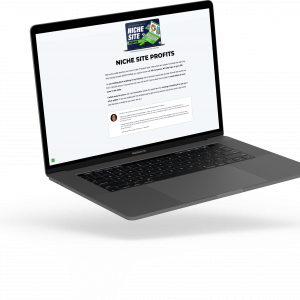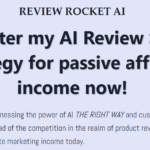Daniel Throssell – Email Copywriting Compendium
$101.00 Original price was: $101.00.$18.99Current price is: $18.99.
If You Want to Pay Via Credit/Debit Card just Contact Us On Site Chat or Email: admin@turbowso.com
IMPORTANT
Product is not part of the Membership Sold separately

Here’s a selection of the 101 rules you will find inside the Compendium:
- The most important word in copywriting (and it’s not “you”, or “free”, or “entertainment”, or “consistency”, or anything trite — I promise it actually will enlighten you) (Rule #1)
- A list I made — for my own personal use — of the 10 elements of must-read email lists (Rule #2)
- One question to ask before EVERY email you send (Rule #3)
- The ideal email length — and yes, I give a word count (Rule #9)
- The THREE hurdles to getting your email read (getting it opened is just the first one — but I’ve never heard anyone teach the other two!) AND how to overcome them (Rules #12, #13 and #14)
- Why telling your sales message in an email is a BAD idea in 2021 (Rule #15)
- A specific numerical rule for how often to sell in your emails, and how hard to do it (Rules #17 and #18)
- The 8 words Australia’s bestselling author taught me about writing emails people want to stay subscribed to for years (Rule #20)
- Why “being your true self” is BAD advice for emails (Rule #22)
- A creepy trick for psychologically abusing your readers into revering you — admittedly, I’m not sure if this will work for anyone other than me, but if you’re on my list you’ve definitely seen ME do this to you, and it’s why you are reading this sales page now … (Rule #24)
- The most incredible technique in the history of storytelling — I use it almost every day (Rule #25)
- Why it’s okay to make up “untrue” stories for your emails, and how to do it (Rule #26)
- How to pull story ideas from your day-to-day life (hint: you’re looking in the wrong place!) (Rule #27)
- Ever felt like your sales email ‘feels’ wrong … but can’t figure out why? I almost guarantee it’s because your email’s lead is missing one of the three things in Rule #28…
- What to do if you’re writing for a client and can’t get personal stories out of them (Rule #29), and …
Why email stories should NOT be about “telling what happened”! (Rule #30)
Let’s take a Gary Halbert-style break here to riff on this one.
Rule #30 in my Compendium is called:
“The Sitcom Secret Behind Telling Great Stories In Emails”
And … it’s one of the most important rules in my email philosophy.
See, there is a CRITICAL element of email storytelling that you must have if you want to build a relationship long-term with your audience.
The devious thing is, even though you need this thing for email storytelling … it actually IS possible to just tell a good story without it. So most people don’t even realise they’re not doing it.
What’s more, I guarantee nobody has ever taught this to you before. Because it’s something I learned from my own observation, and not from any book or course. And it sure as heck isn’t obvious in any way.
Thankfully, though, it’s not actually that hard to learn or use.
And in Rule #30, I tell you everything you need to know about it.
Here are more of the mind-bending copywriting insights you’ll find inside the Compendium …
- How to balance telling ‘me-focused’ stories with ‘you, you, you’ writing about the reader — I have a solution for this that I have NEVER seen taught anywhere else (Rule #31)
- If you write emails for a client, I’ll give you a model for mentally “picturing” the EXACT topics to write about, and what to say (Rule #32)
- Why you should write your emails backwards — literally! (Rule #33)
- Why “write like you’re writing to a friend” is NOT the best advice for emails — and what (not who!) I actually imagine writing for instead of a “friend” (Rule #34)
- Why you should NEVER use questions in a sales email — like “Do you struggle with nagging belly fat?” — and what you should do instead (this rule will change your ENTIRE copywriting paradigm) (Rule #35)
- Ever read other (even famous) copywriters’ emails and felt like the stories they used for “StOrYseLLinG” were … well … kinda boring? I’ll show you why you felt that way — and how to pick stories that ACTUALLY sell (Rule #36)
- 4 ways to never run out of email ideas again — this alone could make the entire purchase worth it for you, if you need to write a lot of emails for clients (Rules #37-#40)
- My favourite way to use stories you find during your market research in your emails (Rule #41)
- The single most persuasive email tactic in the world (hint: it is a ‘genre’ more than a ‘tactic’) (Rule #43)
- Why you must NEVER write an email while sad! (Rule #47)
- The single best way to whip up a frenzy of attention and engagement in your emails. (This technique is “free” in a monetary sense, but be warned that it WILL cost you some of your best subscribers — you’ll have to decide if it’s worth using) (Rule #48)
- Why you should ignore David Ogilvy’s advice for subject lines (Rule #55)
- My unique “question-setup” approach to writing subject lines — and why it’s better than the typical “curiosity gap” theory most people teach (Rules #56 and #57)
- Whether you should use long vs. short subject lines (Rule #58)
- Two “quick-fix” ways to urgently punch up a bad subject line if you’re under the pump (Rule #59)
- A sneaky (and quick) way to use somebody else’s mailing list to test your subject line’s open rates … BEFORE you send your email! (I discovered how to do this one day almost by accident, and I’ve used it constantly ever since — if you do this the way I teach you, I’m pretty sure that legally you don’t even need to ask “permission”) (Rule #61)
- When to use someone’s name in a subject line — and when not to (Rule #62)
- Why technically “good” subject lines can make even your best subscribers angry — and how to avoid this (Rule #64)
- Why studying emails from certain top email copywriters is risky at best, and downright stupid at worst (Rule #67)
- The ideal length of a welcome series, and no, it is not zero or one (Rule #69)
- Why you should never ASK people to whitelist your emails, but TRICK them into doing it instead (and how to do it) (Rule #70)
- How to stop people getting angry when you sell to them (Rule #71) … and, building on this …
A very “politically incorrect” strategy for making even your most hostile enemies accept your ideologies without blinking! (Rule #72)
Let’s break again to dig into this one a little more.
The name of Rule #72 is actually:
“_____ Is A Great Disguise For Hard Sales Tactics”
I can’t tell you the words from the start of the sentence as it would give away the rule. (Sorry, sales page and all.)
But, this is one of the most POWERFUL techniques I have ever discovered for selling full-throttle to my email list … in fact, much harder than almost anyone else I have ever seen … and yet having them LOVE me for it.
In other words, using this technique can almost completely insulate you against looking “salesy” in your emails, no matter how hard you actually sell.
But … this technique is actually much MORE than just a sales technique.
In fact, it’s incredibly powerful as a general persuasion technique … and it’s even being deployed in full force on both sides of the culture wars we face in the West today. It’s used both by the proponents of “woke” culture, AND by some who call it out.
Either way, whether you choose to use it for more nefarious purposes or not, you can certainly use it in your sales emails.
And it’ll change people from getting mad at your constant selling … to loving you for it.
Here are even MORE of the incredible copywriting secrets you will find inside the Compendium, should you choose to buy it …
- Why you should NOT segment out buyers from getting emails for things they’ve already bought! (Rule #73)
- How to sell luxury goods … wine … and even ART using emails (Rules #74, #75 and #76)
- Should you assume people have read your previous emails? (Rule #77)
- How often to email your list (Rule #78)
- The maximum time it should take you to write an email — if it takes you longer, here’s what to do (and no, it’s not “use a timer”) (Rule #79)
- Why you should almost never use bullets in a sales email (Rule #85)
- How to write a better ‘cart abandonment’ sequence (Rule #86)
- The ideal length of an email sale — yes, I give an exact number of days (Rule #87)
- Why you should deliberately NOT send your best sales pitches during an email sale (Rule #89)
- Two emails (which you’re probably including in every sales funnel you write) that are a terrible idea (Rules #94 and #97)
- How long before the cart closes to send your final email reminder about a sale (Rule #98)
- The single most important thing to keep in mind when you make a mistake, like blasting an email with the wrong name to hundreds of thousands of people (Rule #101)

PROOF

Related products
-
Sale!

Roland Frasier – Epic Elite Accelerator (August 2022)
$2,995.00Original price was: $2,995.00.$34.99Current price is: $34.99. Add to cart -
Sale!

Robb Quinn – Art of Sales Team Edition
$697.00Original price was: $697.00.$23.99Current price is: $23.99. Add to cart -
Sale!

James Bonadies – Local Marketing Vault (Complete)
$2,497.00Original price was: $2,497.00.$21.99Current price is: $21.99. Add to cart -
Sale!

Jon Dykstra – Fat Stacks Bundle 2022
$497.00Original price was: $497.00.$1.00Current price is: $1.00. Add to cart
















